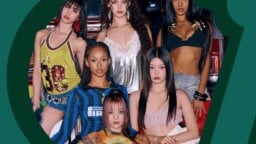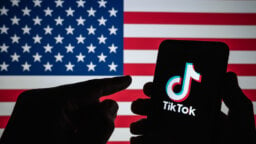There has been a lot of debate this week about the extent to which TikTok will be impacted by the combined removal of Universal Music Group‘s publishing rights (spanning around 4 million songs) and recorded music repertoire (covering around 3 million recordings).
A TikTok spokesperson told us this week that “in the US and UK, UMG and UMPG combined [comprises] approximately 30% of popular music on the platform, and even less everywhere else”.
Senior music industry sources, however, have disagreed with this assessment. Speaking to MBW, a number of music execs have estimated that somewhere between 60% and 80% of “relevant repertoire” on TikTok – i.e. current and proven hits – would be impacted by TikTok’s removal of UMG’s (combined) publishing and recorded music repertoire.
In an analysis of the UMG vs TikTok situation published this week, J.P. Morgan analyst Daniel Kerven estimated that TikTok “would lose access to a total of 5 million songs” as a result of the removal of the UMG recordings catalog, combined with the deletion of additional UMPG repertoire.
Obviously enough, if a UMPG-signed songwriter writes or co-writes a hit whose recording is released via a non-UMG label (for example, Dua Lipa’s current single, Training Season, released on Warner Records but co-written by UMPG-signed Danny L Harle) that track will need to come down from TikTok as UMPG’s license with the service expires.
On Universal’s Q4 2023 earnings call on Wednesday (February 28), Michael Nash, EVP and Chief Digital Officer of UMG, asked analysts to carefully consider the criteria of any market share estimate of UMG’s repertoire on TikTok.
Said Nash: “Are you talking about popular music as we think about it? Or are you talking about all audio content – [which] might include sound effects and a lot of AI content?
“Obviously, we don’t think that [kind of non-copyrighted audio] should be part of any artist royalty pool calculation.”
What Nash didn’t mention: copyrighted music that has then been modified by TikTok users – with its pitch or speed adjusted – and subsequently uploaded to the platform. And which, as a result of that modification, evades straightforward copyright detection (and market share attribution).
How much of the music on TikTok is ‘modified’ in this way? According to one industry analytics platform… a material amount.
According to a new study from Pex, which monitors and analyzes copyrighted content on digital services, TikTok has the most modified audio of all major UGC platforms, including YouTube, Facebook, and Instagram.
Pex estimates that comfortably more than a third (38.03%) of all songs found on TikTok were speed or pitch-modified in 2023.
Not only that, but Pex estimates that the share of tracks on TikTok that are modified is increasing – up from 24.55% in 2022 to 38.03% in 2023 (see below).
Pex has confirmed to MBW that it analyzed a sample of around 100 million tracks on TikTok for its latest study.
In total Pex’s 2023 study monitored “hundreds of millions” of tracks across more than 20 platforms (TikTok included) over a 12-month period (Jan 2023 to Jan 2024).

According to Pex, modified audio often isn’t easy to find via basic search.
On UGC platforms analyzed as part of Pex’s analysis, less than 1% of identified content used keywords in the title to indicate that it was the modified version of the original.
“If we were trying to find modified audio by searching for keywords, we’d miss millions of songs or have to listen to every track to hear its speed and pitch,” explained Pex in its report.
Pex estimates that just 0.16% of identified content contained “sped up” or “nightcore” in the title, and 0.11% had “slowed”, “reverb”, or “slowed+reverb” in the title.
Adds Pex: “This is where content identification technology comes into play: only ACR or MRT technology like we use at Pex can match content by analyzing the audio itself, as opposed to just keywords.”
Two big questions are triggered by this new information from Pex, then:
- How much of that modified audio on TikTok (and other UGC platforms) is based on robustly copyrighted material?
- And how much of that robustly copyrighted material is owned by Universal Music Group?
Pex CEO Rasty Turek featured on the MBW podcast last year, which you can listen to here.
In that episode, we discussed modified audio on audio platforms (not video platforms), and Turek explained the copyright implications of what Pex estimates to be over a million tracks on audio streaming services like Spotify, Apple Music, and TIDAL.
Unless these million-plus tracks have legally licensed the original recording on which they’re based, they’re infringing copyright.
This doesn’t only affect music streaming. It also impacts UGC social platforms like TikTok, as highlighted by Pex’s study.
“Rising in popularity, modified audio remixes often divert royalty payments away from rightsholders and into the hands of other creators,” says Pex.
“Many of these songs aren’t licensed, and as such the ownership information for them directs to the creator of the modified track, not to any of the original rightsholders.
“Without a license or proper attribution, rightsholders won’t see any credit or payment from the use of their songs.”

Chartmetric is the all-in-one platform for artists and music industry professionals, providing comprehensive streaming, social, and audience data for everyone to create successful careers in music.Music Business Worldwide





